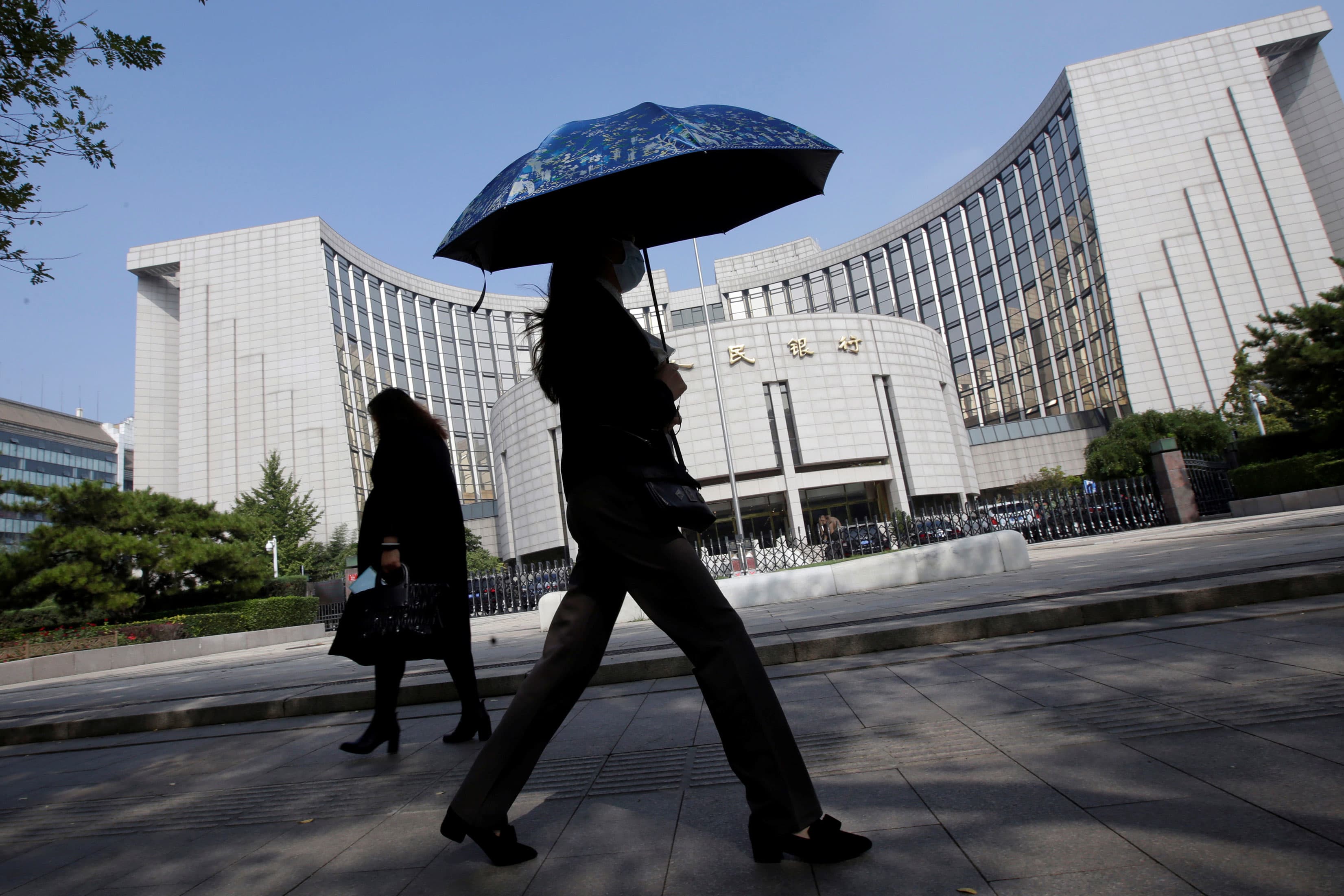BEIJING — China’s central bank removed several phrases on policy restraint in a quarterly report, a move economists said may be a sign that stimulus is on its way.
The People’s Bank of China has kept monetary policy little changed since China shook off the worst of the pandemic’s impact last year. Economic growth has slowed in the last several months amid a regulatory crackdown on the property sector, power shortages at factories and lackluster consumer spending.
The PBOC’s third quarter report on monetary policy released late Friday left out a reference to how the central bank would not engage in large-scale, flood-like stimulus. It’s a phrase that indicates policy restraint and has appeared in central government statements since at least 2019, before the pandemic.
“In our view, these deletions represent an official change to the PBoC’s policy stance and sets the stage for more decisive monetary and credit easing,” Ting Lu, chief China economist at Nomura, said in a report Sunday. He noted that China is in its worst economic slowdown since 2015, excluding the initial outbreak of the Covid-19 pandemic.
Lu pointed to other deletions, including one about controlling money supply — a measure of cash and other easily usable currency. Expanding the money supply typically stimulates spending in the economy.
The deleted reference to money supply was first made in a report in November 2020, when the central bank was about to wind down pandemic-era stimulus, Larry Hu, chief China economist at Macquarie, said in a note Sunday.
“This time, the removal of the phrase set[s] the stage for a step-up in monetary easing,” Hu said.
In a section about keeping monetary policy flexible and targeted, the PBOC also deleted a reference to maintaining “normal” monetary policy.
Hu said the PBOC has turned more cautious on the outlook for inflation. Although a sub-head in the central bank’s latest report still described pressure from rising prices as “controllable,” the authors deleted a reference to how there was no basis for long-term inflation or deflation.
Little change on property curbs
Even with these signals, economists expect Beijing will move stealthily.
The PBOC on Monday kept its benchmark lending rate unchanged for a 19th straight month since April 2020.
“I don’t think there is a major shift in monetary policy,” Bruce Pang, head of macro and strategy research at China Renaissance, said in Chinese, according to a CNBC translation.
Instead, deleting these rather “absolute” statements gives policymakers more space for future operations, Pang said, noting policymakers have used not used the phrases much in the last month or so.
We believe the worst for both the property market and the overall economy is yet to come, and only then (perhaps in spring 2022) will we see some real changes to the property curbs.Ting Luchief China economist, Nomura
Despite growing concerns about the economic slowdown, the PBOC maintained its strict stance on the property market — which, along with related industries, accounts for about a quarter of China’s economy.
Industry giant China Evergrande has teetered on the edge of default in the last few months following Beijing’s efforts to reduce real estate developers’ reliance on high debt levels for growth.
The central bank said in Friday’s report that risks in the real estate market remained controllable, and the overall healthy development of the industry would not change.
“We believe the worst for both the property market and the overall economy is yet to come, and only then (perhaps in spring 2022) will we see some real changes to the property curbs,” Nomura’s Lu said.
